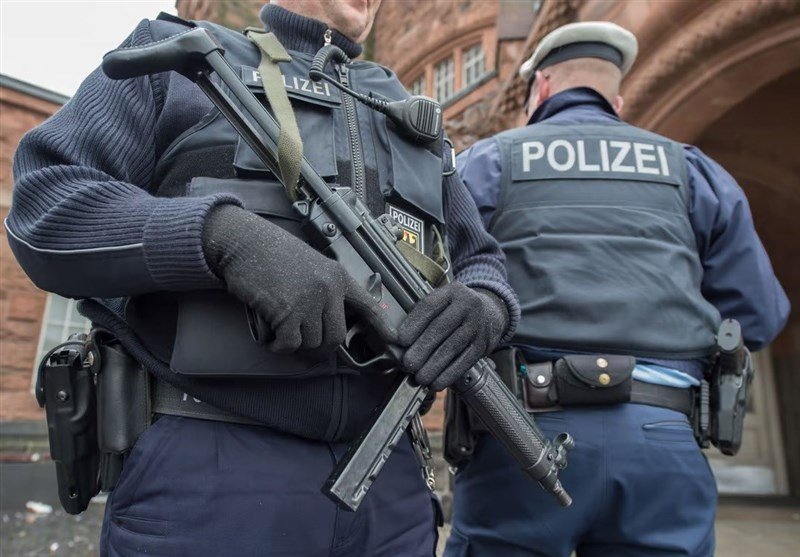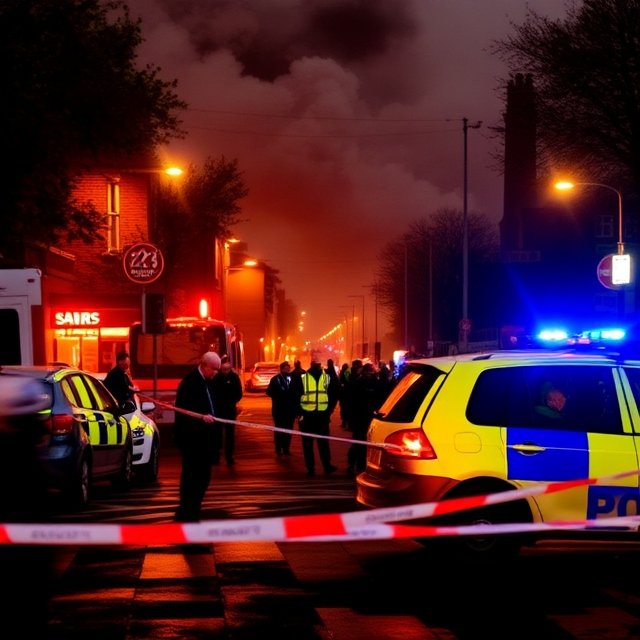In recent years, London has witnessed an unsettling rise in violent crime, with stabbings becoming a particularly prominent issue. These incidents have raised serious concerns regarding public safety, law enforcement practices, and social conditions. The term “London stabbing” has become all too familiar in the news, with daily reports often detailing tragic losses. This article aims to provide an in-depth understanding of this ongoing issue, examining the causes, the victims, the public reaction, and the response of authorities, while considering the implications for the city’s future.
The Rise of Stabbings in London
London’s crime rate has been a topic of public discourse for years, and the increase in stabbings has become a central aspect of this conversation. While violent crime is not new to large cities, the city has seen a distinct rise in knife-related incidents in recent times. According to official statistics, stabbings in London have surged dramatically over the past decade, leading many to question why this trend has been allowed to escalate.
Various factors contribute to this rise, including social inequality, gang culture, and the availability of knives. The appeal of using knives in attacks is partly due to their perceived accessibility and effectiveness in close-quarters combat. With such a significant increase in the number of stabbings, London has become known for having one of the highest rates of knife crime in Europe.
The Role of Gangs in the Stabbing Epidemic
A significant factor in the rise of stabbings is gang violence, which has plagued the streets of London for years. Rival gangs often use knives as weapons to assert dominance, settle disputes, or defend their turf. This violence is most commonly associated with younger individuals, many of whom are drawn into gang activity due to socio-economic pressures, a lack of opportunities, and the influence of peers.
Many of these gangs operate in underprivileged areas of London, where residents often feel marginalized and disconnected from the broader community. Gangs provide a sense of belonging and protection, but at a high cost—violence and crime become an everyday reality for many young people. The stabbing incidents that occur as part of gang conflicts contribute significantly to the city’s growing crime problem.
Vulnerable Victims of Knife Crime
The victims of stabbings in London come from all walks of life, but the most vulnerable tend to be young people. Many victims are teenagers or young adults who find themselves caught in the crossfire of gang disputes or involved in altercations that escalate into violence. While the majority of victims survive their injuries, many are left with life-changing scars, both physically and emotionally.
However, stabbings do not only affect those directly involved in gang violence. Innocent bystanders, including parents, schoolchildren, and elderly citizens, have been victims of random attacks. This indiscriminate violence has created a sense of fear that permeates throughout London. Many residents now live with the constant anxiety of being at the wrong place at the wrong time.
London’s Response to the Knife Crime Crisis
In response to the increasing number of stabbings, London’s authorities have taken various measures to try and curb the problem. The Metropolitan Police, along with local law enforcement agencies, have ramped up efforts to target knife crime. Operation Sceptre, for example, is an initiative that focuses on removing knives from the streets and providing educational programs to deter young people from engaging in violent behavior.
Additionally, stricter laws have been implemented to prevent the carrying of knives. These laws, however, have been met with mixed reactions. While they have been successful in reducing the number of knives on the streets, critics argue that they are not enough to address the root causes of violence, such as poverty, social exclusion, and lack of education.
Community Involvement in Tackling Violence
While the government and law enforcement agencies play a crucial role in tackling knife crime, the involvement of communities is equally important. Local organizations, schools, and community groups are working together to create safe spaces for young people and offer alternatives to gang culture. Initiatives such as mentoring programs, sports clubs, and youth engagement projects are vital in steering young people away from violence and providing them with positive role models.
In some areas, community leaders have called for a more collaborative approach between residents and authorities to identify at-risk individuals and provide support before they become involved in violent crime. Community-led efforts have had a measurable impact on reducing crime rates in some parts of London, showing that grassroots involvement can be an essential part of the solution.

The Media and Public Perception of London Stabbings
The media plays a significant role in shaping the public’s perception of crime. The relentless coverage of stabbings and other violent crimes in London can often lead to a sense of panic and fear, even in areas where crime rates have been declining. The graphic nature of some reports and images shared on social media can also contribute to the normalization of violence in the minds of viewers.
However, the media can also serve as a powerful tool for raising awareness and inspiring action. Campaigns like #KnifeFree, which encourage young people to reject violence, have gained traction through media exposure. By highlighting positive stories of young people turning their lives around, the media can contribute to changing the narrative surrounding youth violence and inspire others to seek help.
The Psychological Impact of Stabbings on the Community
The psychological effects of stabbings extend beyond the immediate victims and their families. Communities that experience high rates of violence often become traumatized, with residents living in a constant state of fear. For young people growing up in areas affected by knife crime, the trauma can be lifelong, affecting their mental health and their view of the world.
The normalization of violence can also create a cycle where younger generations become desensitized to crime. In some cases, they may even view stabbings as an inevitable part of life. Addressing this psychological impact is crucial to breaking the cycle of violence and ensuring that future generations do not fall into the same patterns.
Economic Impact of Knife Crime in London
The economic cost of knife crime is another often-overlooked aspect of the issue. The resources needed to deal with the aftermath of stabbings—medical treatment, law enforcement efforts, and judicial proceedings—place a heavy burden on public services. Additionally, businesses in areas affected by frequent stabbings may suffer, as residents may feel unsafe to go out, leading to a decline in consumer spending.
The long-term economic consequences also extend to those affected by violence, particularly victims who are left with permanent physical or psychological damage. Many struggle to return to work or live full lives due to the impact of their injuries. The costs of lost productivity and long-term health care for victims are a significant strain on the economy, further emphasizing the importance of addressing the root causes of violence.
The Future of Knife Crime in London
As the problem of stabbings continues to grow, many are left wondering what the future holds for London. While authorities continue to crack down on knife crime, the city’s social problems remain a challenge. Tackling the underlying causes of violence—such as poverty, education, and mental health issues—will require a long-term, coordinated effort from all sectors of society.
Despite the alarming statistics, there is hope. Increased awareness, stronger community engagement, and comprehensive support for at-risk individuals can make a significant difference in reducing the prevalence of stabbings. The key to solving London’s knife crime epidemic lies not just in policing but in addressing the broader societal issues that fuel it.
Final Thought
The rise in stabbings in London has sparked a wide-ranging debate about how to address the issue of knife crime. While there is no single solution, a combination of law enforcement, community engagement, and addressing the root causes of violence offers the best chance for reducing the number of stabbings in the city. Public awareness and support for young people who are at risk of being involved in knife crime are crucial to breaking the cycle of violence. By focusing on prevention and intervention, London can take meaningful steps toward creating a safer, more secure environment for all its residents.
FAQs
What is the latest news on the London stabbing incidents?
London has been experiencing an increase in violent crimes, including stabbings. Recent reports highlight multiple stabbings in different areas of the city, drawing attention to the rising issue of knife crime in the UK. Authorities have been stepping up efforts to address this issue, focusing on enforcement and public awareness campaigns.
Why is knife crime on the rise in London?
Several factors contribute to the rise in knife crime in London, including gang-related violence, socioeconomic inequality, and the availability of knives. Law enforcement agencies are collaborating with community groups to prevent further escalation, though challenges remain in reducing the occurrence of such crimes.
How is the police responding to the increase in stabbings?
The Metropolitan Police have introduced several initiatives aimed at combating knife crime. These include targeted patrols, increased stop-and-search measures, and partnerships with local communities. Specialized units are also focusing on high-risk areas and individuals suspected of carrying weapons.
What can residents do to stay safe in London?
Residents in London are advised to be cautious, particularly when traveling at night or in poorly lit areas. It’s recommended to avoid risky situations and to report any suspicious activity to the authorities. Public campaigns have also encouraged the safe disposal of knives through various schemes to reduce weapons in circulation.
Are there support services for victims of stabbings in London?
Yes, there are various support services available for victims of violent crime, including helplines, counseling services, and local charities that provide emotional and financial support. Victims are encouraged to seek help from these services to recover from their traumatic experiences.
To read more; Click here



